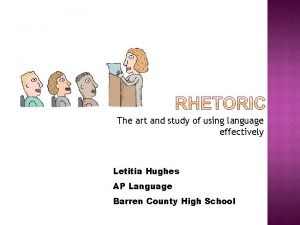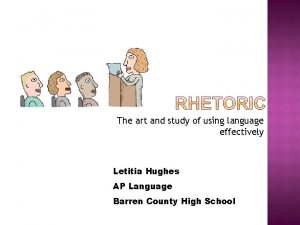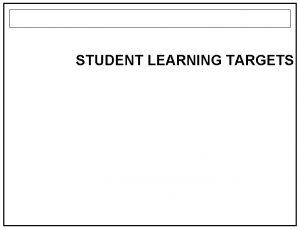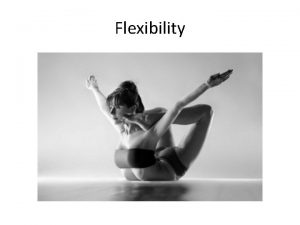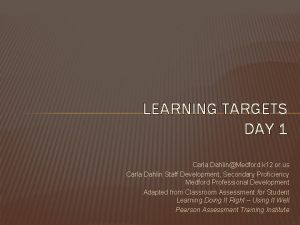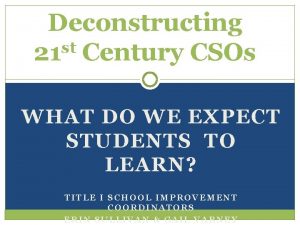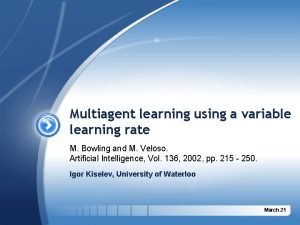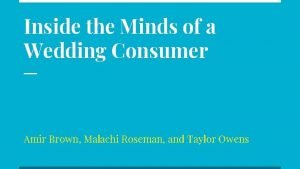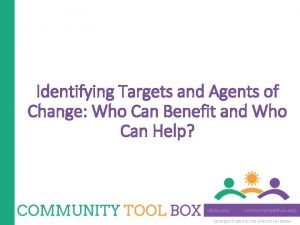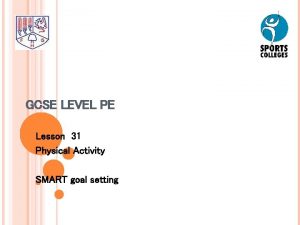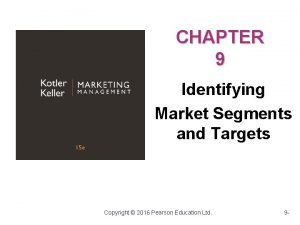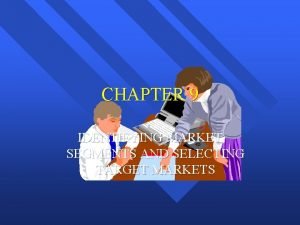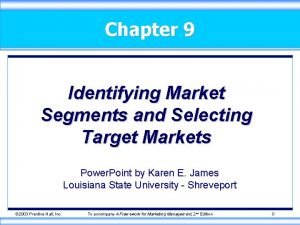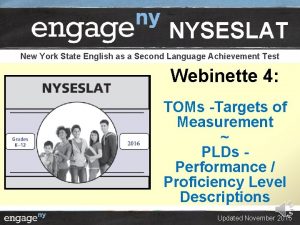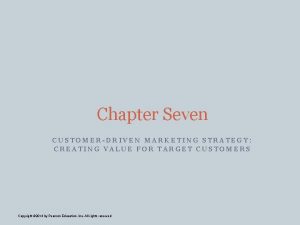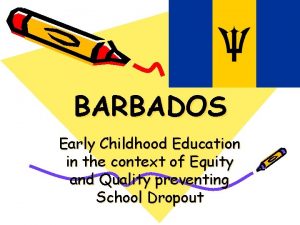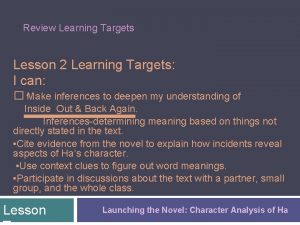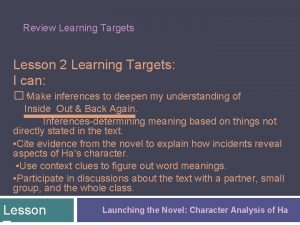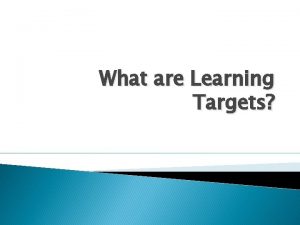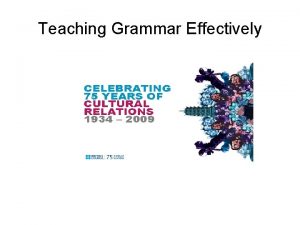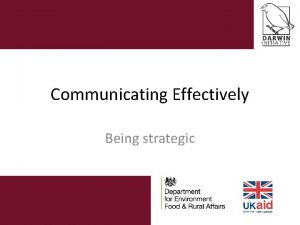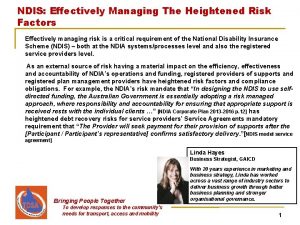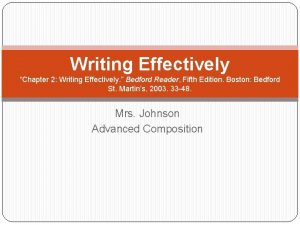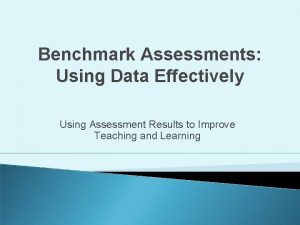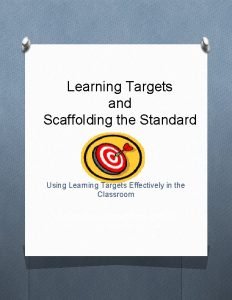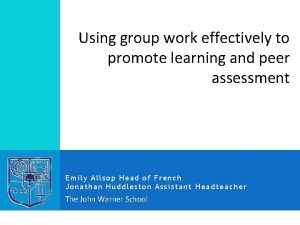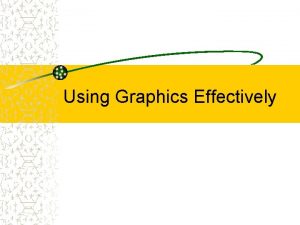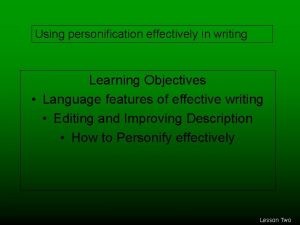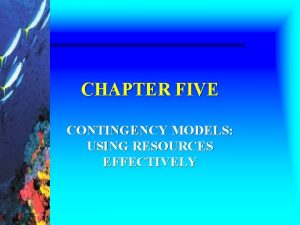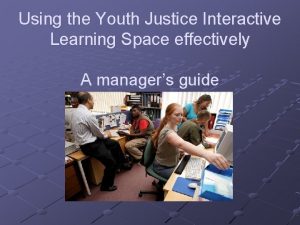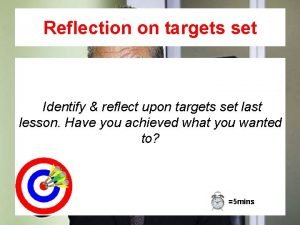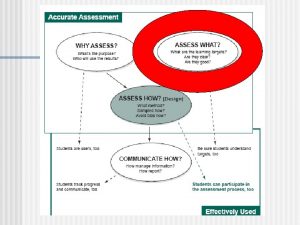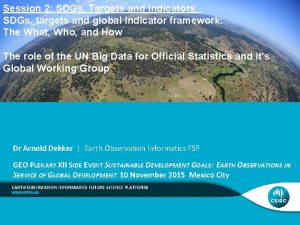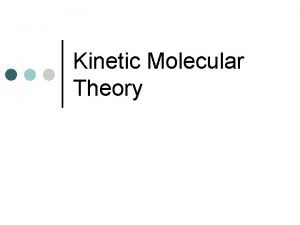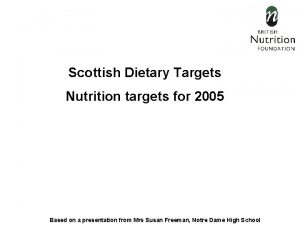Learning Targets Using Learning Targets Effectively in the





















- Slides: 21

Learning Targets Using Learning Targets Effectively in the Classroom Presentation Adapted from PIMSER By Jenny Ray

Research-based Strategies 5 Research-based strategies that significantly improve student learning: ü Clarifying and sharing learning intentions and O O criteria for success Effective Questioning (Engineering effective discussion, questions, activities, and tasks that elicit evidence of learning) Descriptive Feedback that moves learners forward Peer assessment (Students as instructional resources for one another. ) Self-assessment (Activating students as owners of their own learning. )

Difference Between Learning Target and Learning Objective (Teacher Target) Learning Targets are short term goals written from the Student’s Point of View O I can perform operations with radicals. O I can solve systems of equations by substitution. Learning Objectives are written as a goal the teacher wants the student to accomplish. O The student will perform operations with radicals. O The student will know how to solve systems of equations by substitutions.

What is an Effective Learning Target? Effective learning targets guide instruction and learning for a single classroom lesson. When designed well, learning targets O focus on appropriate content/grade level standards, O student point of view and O include measurable objectives that anchor instructional activities/formative assessment

Is this an Effective Learning Target? I can explore volume. O Exploring volume has many components; the target needs to focus on one particular aspect of volume I can identify characters, setting and plot. O Focus on character for today’s lesson, then move on to the other two concepts. I can find perimeter of a polygon. O Provides a measurable objective written from student’s point of view that will drive instruction and assessment during the lesson. .

Evaluate the Following Standard-Learning Target Pairs Are they WEAK or STRONG?

Analyze, and explain the relationships between the respiratory and cardiovascular systems as they obtain oxygen needed for the oxidation of nutrients and removal of carbon dioxide. I can compare and contrast the structure of the human circulatory and respiratory system.

Analyze, and explain the relationships between the respiratory and cardiovascular systems as they obtain oxygen needed for the oxidation of nutrients and removal of carbon dioxide. S O R T G N I can compare and contrast the structure of the human circulatory and respiratory systems.

Determine heat capacity of a substance using mass, specific heat, and temperature. I can use a computer interactive module to reinforce my ability to compute capacity problems.

Determine heat capacity of a substance using mass, specific heat, and temperature. W k a e I can use a computer interactive module to reinforce my ability to compute capacity problems.

Students will conceptualize positive and negative numbers (including decimals and fractions). I can apply the patterns found in multiplying integers to division of positive and negative integers.

Students will conceptualize positive and negative numbers (including decimals and fractions). S O R T G N I can apply the patterns found in multiplying integers to division of positive and negative integers.

Prove theorems about triangles. Theorems include: a line parallel to one side of a triangle divides the other two proportionally, (and its converse); the Pythagorean Theorem using triangle similarity. Can I determine if sides of a triangle are parallel based on proportionality?

Prove theorems about triangles. Theorems include: a line parallel to one side of a triangle divides the other two proportionally, (and its converse); the Pythagorean Theorem using triangle similarity. W k a e Can I determine if sides of a triangle are parallel based on proportionality?

CLOSING: Which Learning Target is Best Aligned to Today’s Lesson?

Task Cards (Next 5 slides)

I can explain the different between gravitational energy and elastic potential energy. The student will analyze energy of position, including gravitational potential energy and elastic potential energy. I can solve word problems that analyze energy of position, including gravitational potential and elastic potential energies. . I can analyze energy of position, including gravitational potential and elastic potential energies. .

I can identify the topic sentence and supporting sentences in a paragraph. The student will develop a topic sentence and supporting sentences. I can evaluate a topic sentence to ensure that it represents its paragraph’s main idea. I can describe the purpose of a topic sentence and supporting sentence.

calculate distances between two points on 1) a map of Africa and 2) a map of one African nation. The student will measure distances on a variety of maps . I can use the map’s index and grid to locate two geographical points I can calculate distances between two positions on 1) a map of Africa and 2) a map of one African nation. I can convert the distance on a map to the actual distance between two places using the map scale.

I can accurately measure the distance between two points in inches and centimeters.

Students learn and effectively apply a variety of reading strategies for comprehending, interpreting and evaluating a wide range of texts including fiction, nonfiction, classic and contemporary works. Students will investigate structure and function of living systems. Students demonstrate an understanding of the notion of differentiability. I can use reading strategies such as making inferences and predictions, summarizing, paraphrasing, differentiating fact from opinion, drawing conclusions, and determining the author’s purpose and perspective to comprehend written selections.
 The art of the effective use of language
The art of the effective use of language The art of using language effectively
The art of using language effectively Writing learning targets
Writing learning targets Agonist antagonist muscles
Agonist antagonist muscles What are the three methods of crime scene recording
What are the three methods of crime scene recording Reasoning learning targets examples
Reasoning learning targets examples Learning targets knowledge, reasoning, skill product
Learning targets knowledge, reasoning, skill product Learning target
Learning target Multiagent learning using a variable learning rate
Multiagent learning using a variable learning rate Objectives of warehouse management
Objectives of warehouse management Racial etiquette targets
Racial etiquette targets Brides magazine targets consumers who are in
Brides magazine targets consumers who are in Targets of change
Targets of change What does smart stand for in pe
What does smart stand for in pe Identifying market segments and targets chapter 9
Identifying market segments and targets chapter 9 Identifying market segments and targets
Identifying market segments and targets Identifying market segments and targets chapter 9
Identifying market segments and targets chapter 9 Nyseslat performance level descriptions
Nyseslat performance level descriptions The process of customer-driven marketing involves
The process of customer-driven marketing involves Early childhood education barbados
Early childhood education barbados Four levels of micromarketing
Four levels of micromarketing Physical targets
Physical targets
